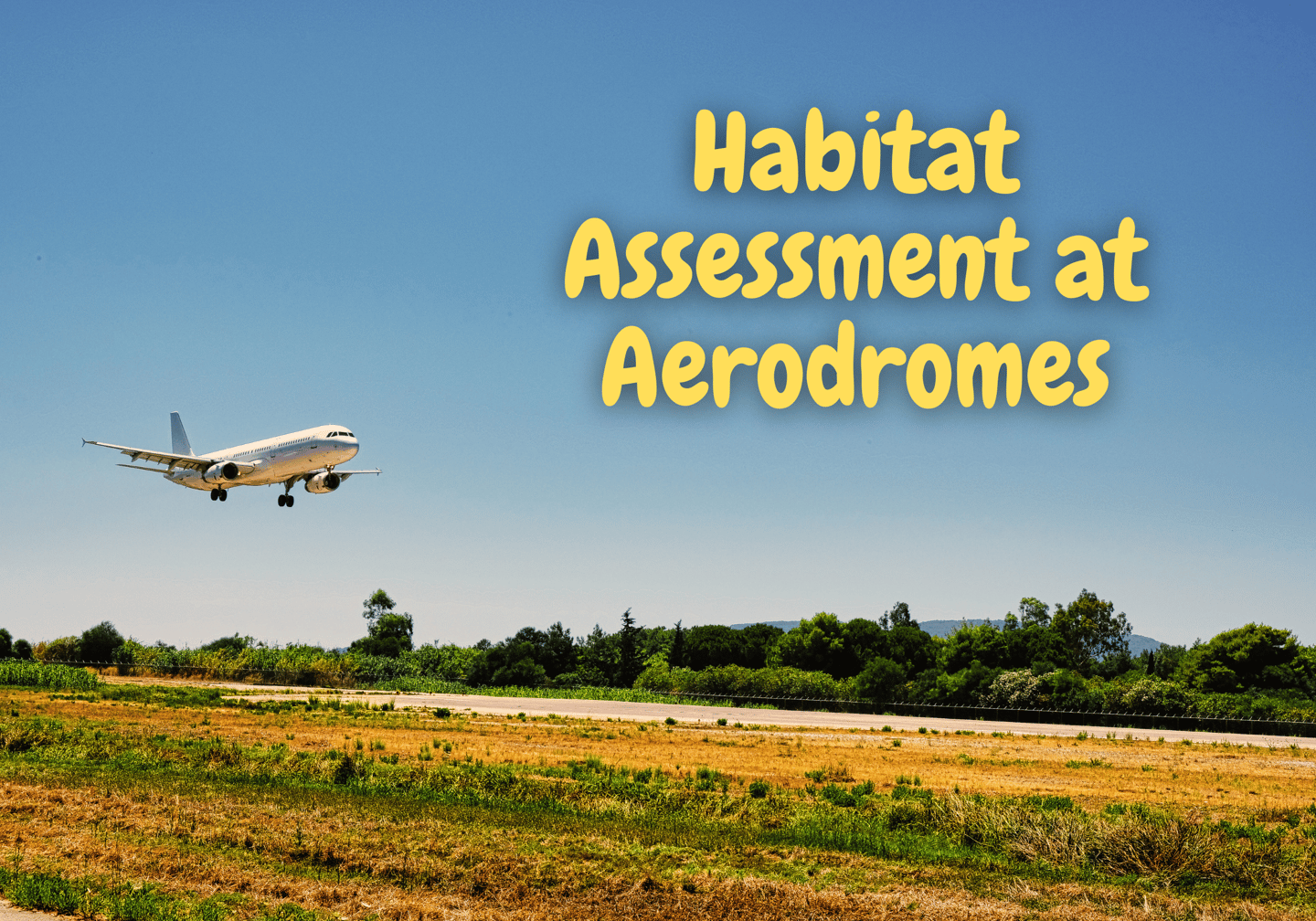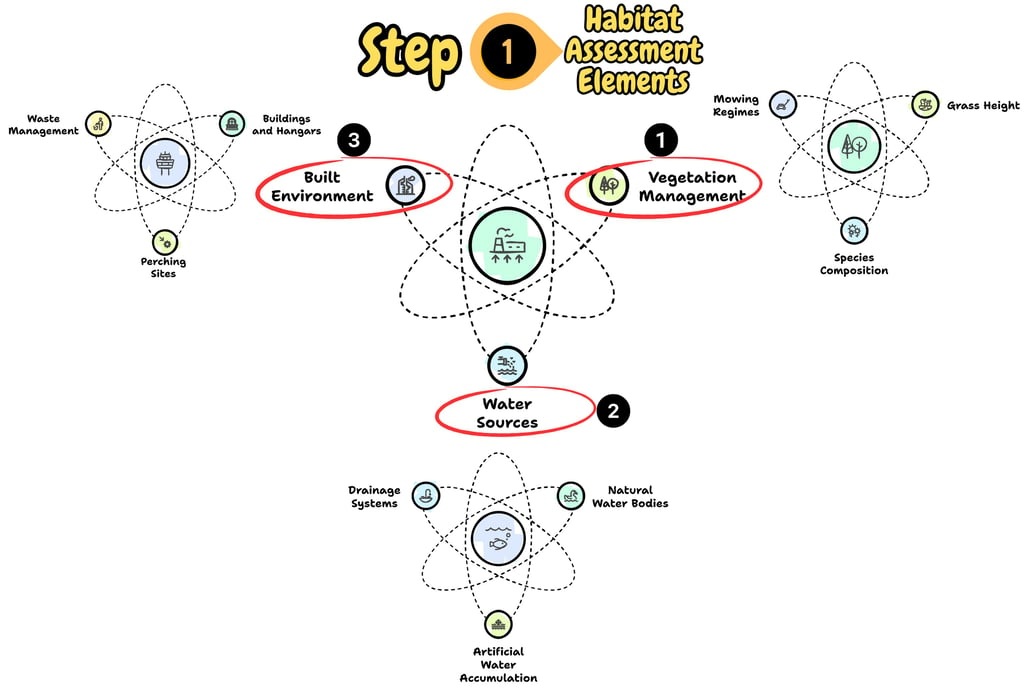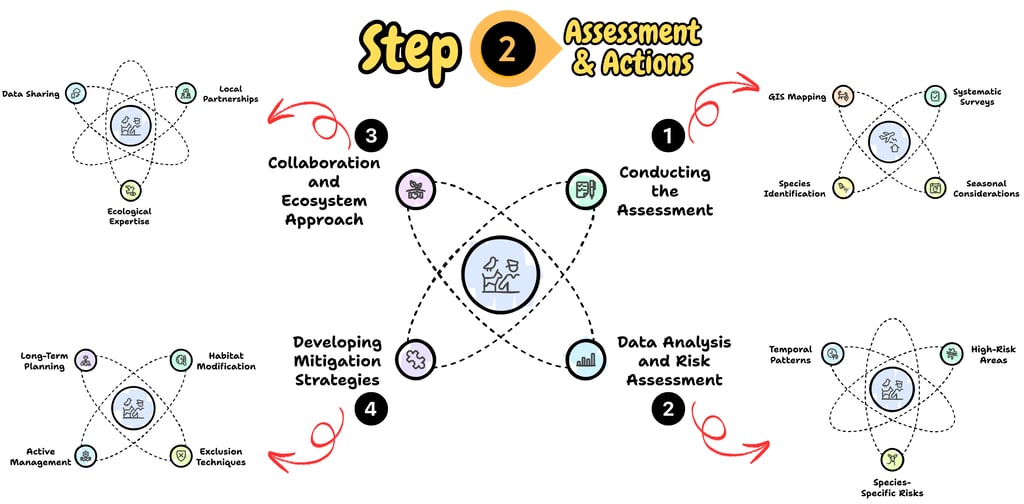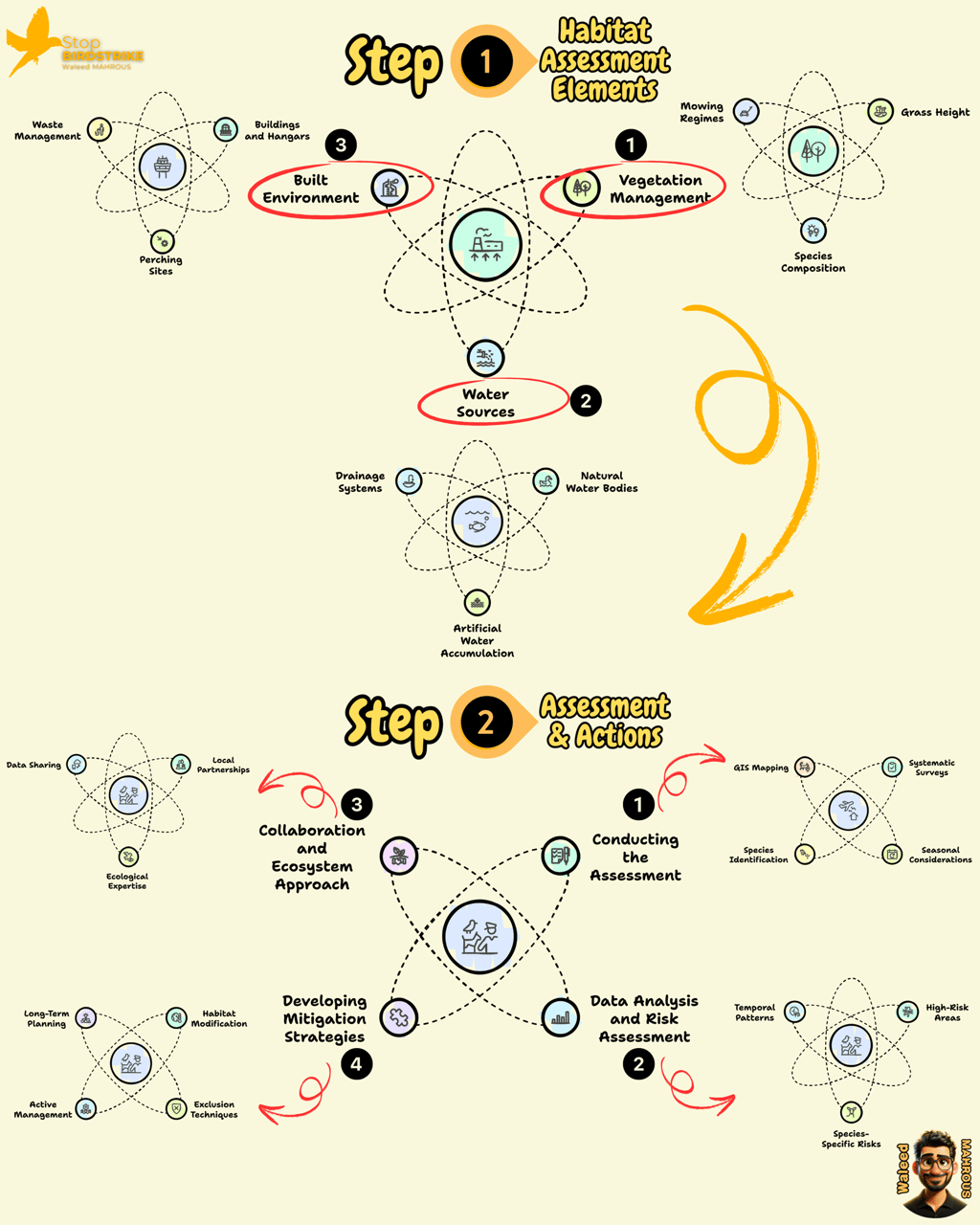Habitat Assessment at Aerodromes: Identifying and Managing Wildlife Attractions
Effective wildlife hazard management at aerodromes begins with a comprehensive understanding of the local habitat and its potential to attract various species. This article delves into the core principles of habitat assessment, focusing on key environmental factors that may draw wildlife to airport grounds.
FUNDAMENTALS OF WILDLIFE HAZARD MANAGEMENT
Waleed MAHROUS
1/7/20253 min read


The Importance of Habitat Assessment
Habitat assessment forms the foundation of any successful Wildlife Hazard Management Plan (WHMP). By identifying and evaluating potential wildlife attractants, aerodrome operators can develop targeted strategies to mitigate risks efficiently and sustainably.
Key Elements of Habitat Assessment
Vegetation Management
Grassland areas often constitute a significant portion of aerodrome property and can be highly attractive to various bird species. When assessing vegetation:
Grass Height: Maintain grass at an optimal height (typically 15-30 cm) to deter ground-feeding birds while still allowing visibility for predator detection.
Species Composition: Identify plant species that may attract wildlife through seeds, fruits, or associated insects.
Mowing Regimes: Evaluate mowing schedules to minimize disturbance and temporary attractiveness to birds seeking exposed insects.
Water Sources
Standing water, even in small quantities, can be a powerful wildlife attractant. Assessment should include:
Natural Water Bodies: Identify nearby ponds, wetlands, or streams that may influence wildlife movements.
Artificial Water Accumulation: Locate areas prone to pooling after rainfall, such as uneven pavement or poorly drained fields.
Drainage Systems: Evaluate the effectiveness of existing drainage to minimize standing water.
Built Environment
Airport infrastructure can inadvertently provide shelter or nesting sites for wildlife:
Buildings and Hangars: Assess for potential nesting or roosting sites in eaves, ledges, or open structures.
Perching Sites: Identify light poles, signs, or other elevated structures that birds may use as vantage points.
Waste Management: Evaluate the placement and management of waste facilities that could attract scavenging species.
Conducting the Assessment
A thorough habitat assessment should involve:
Systematic Surveys: Conduct regular, structured surveys of the aerodrome and surrounding areas up to 13 km from the airport reference point.
Seasonal Considerations: Perform assessments across different seasons to account for migratory patterns and seasonal habitat changes.
Species Identification: Accurately identify and record all wildlife species observed, noting their behaviors and preferred habitats.
GIS Mapping: Utilize Geographic Information Systems to create detailed maps of wildlife attractants and activity patterns.
Data Analysis and Risk Assessment
Once data is collected, it should be analyzed to:
Identify High-Risk Areas: Pinpoint locations with the highest concentration of wildlife activity or most attractive habitats.
Species-Specific Risks: Evaluate the potential hazard posed by different species based on their size, behavior, and abundance.
Temporal Patterns: Recognize time-of-day or seasonal trends in wildlife presence.
Developing Mitigation Strategies
Based on the assessment findings, aerodrome operators can implement targeted mitigation measures:
Habitat Modification: Alter landscapes to be less attractive, such as replacing fruit-bearing plants with less appealing species.
Exclusion Techniques: Install physical barriers like netting or fencing in high-risk areas.
Active Management: Implement wildlife dispersal techniques in identified hotspots.
Long-Term Planning: Develop strategies for ongoing habitat management, including regular assessments and adaptive measures.
Collaboration and Ecosystem Approach
Effective habitat assessment extends beyond airport boundaries:
Local Partnerships: Engage with surrounding landowners and local authorities to manage attractants in the vicinity.
Ecological Expertise: Collaborate with wildlife biologists and ecologists to gain deeper insights into local ecosystems.
Data Sharing: Participate in national and international wildlife strike databases to contribute to broader understanding and management strategies.


By conducting thorough habitat assessments and implementing data-driven management strategies, aerodrome operators can significantly reduce wildlife hazards while promoting sustainable coexistence between aviation activities and local ecosystems. This approach not only enhances safety but also contributes to more environmentally responsible airport operations.





